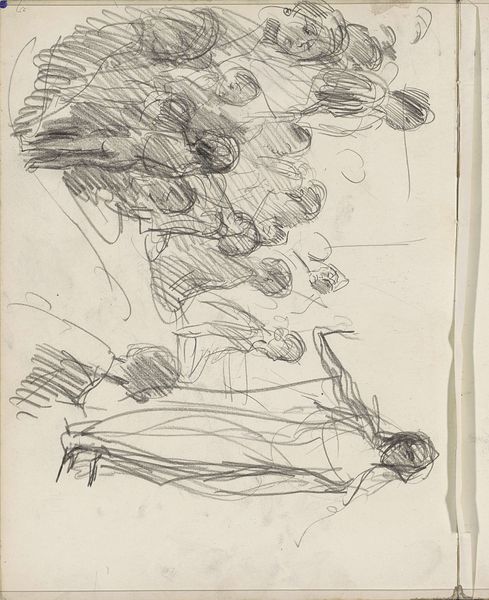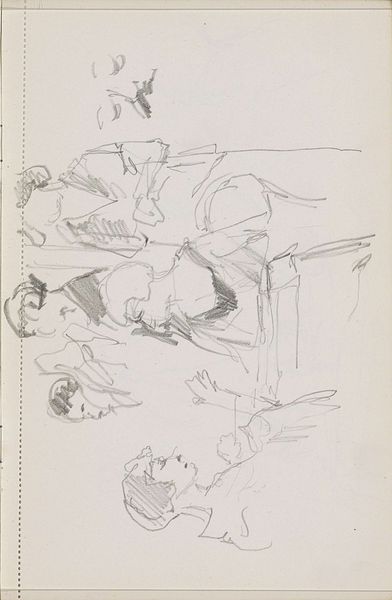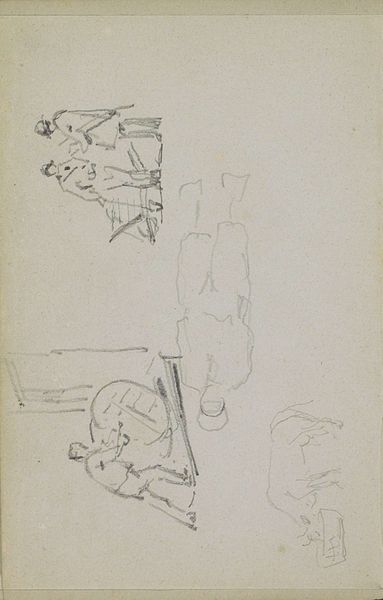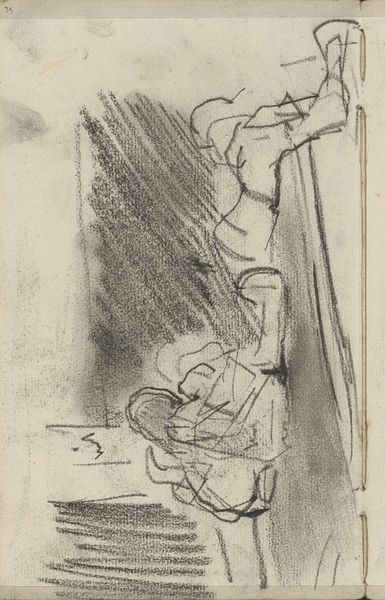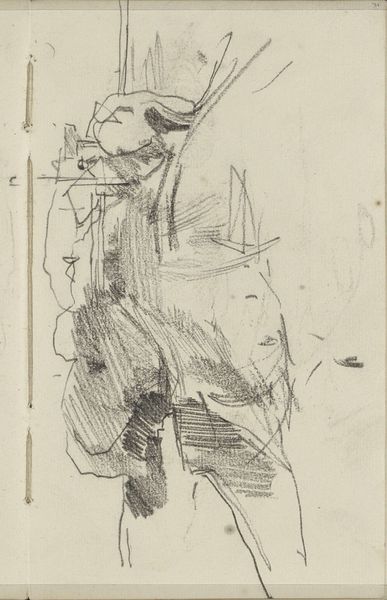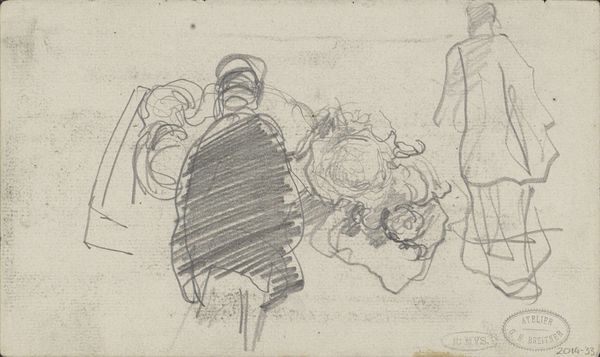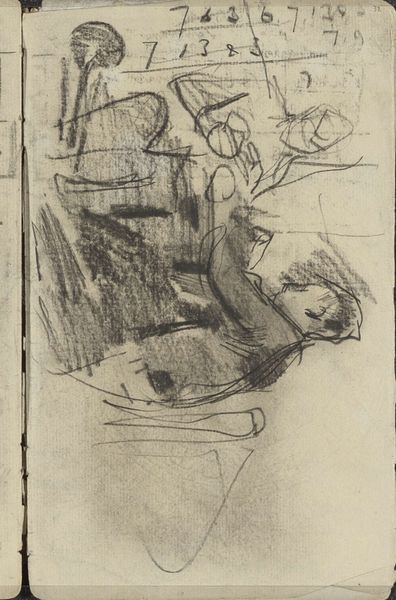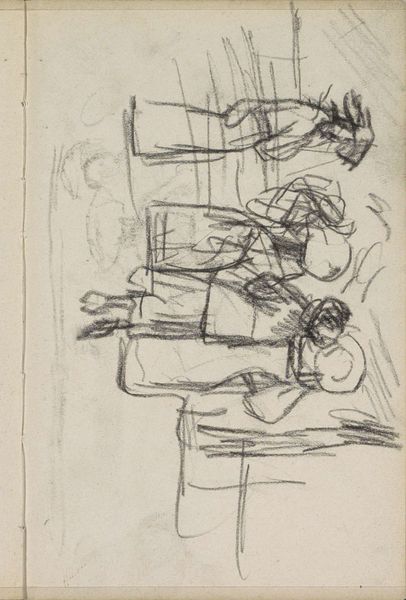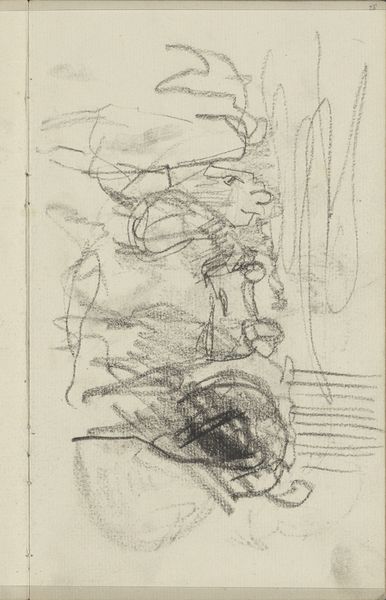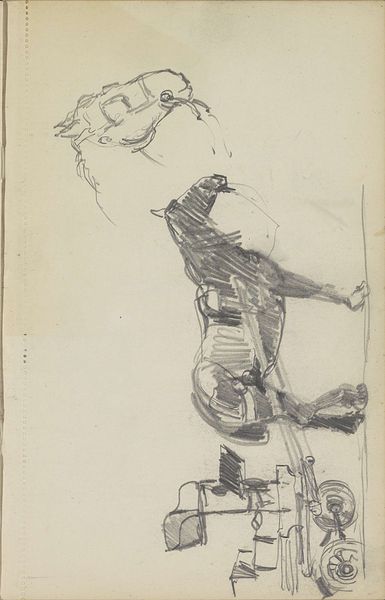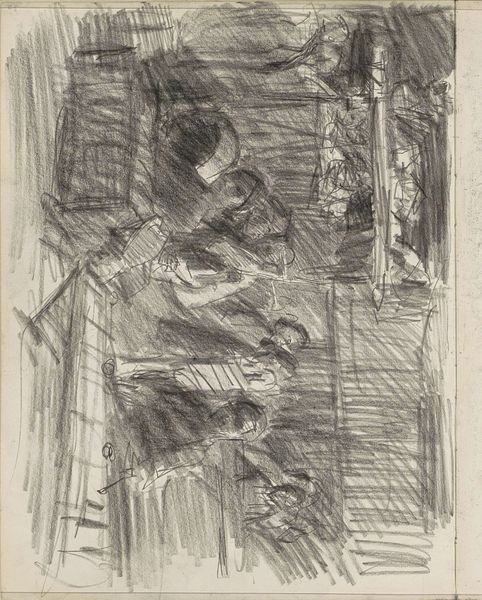
Copyright: Rijks Museum: Open Domain
Editor: So, this is Isaac Israels' "Toeschouwers bij danseressen," a pencil drawing from 1921-1922. It's a really dynamic sketch. The figures are loosely rendered, giving it a sense of immediacy. What's your take on it? How do you see this drawing within its historical context? Curator: For me, this sketch is fascinating because it speaks to the changing social landscape of the early 20th century and the role of art in reflecting those shifts. Israels, an impressionist, was deeply embedded in capturing modern life. Consider the access he had to these dancers, this wasn't necessarily available to everyone. What does that say about the art world then? Editor: That's a great point. The gaze, the access, it’s definitely exclusive. Does the looseness of the drawing itself, the sketchy quality, also tie into the Impressionist movement's focus on capturing fleeting moments? Curator: Exactly! And think about the rise of dance as a popular form of entertainment and artistic expression during this time. Artists were drawn to the energy, the movement, the very modern spectacle of it all. How did exhibiting this work and similar drawings in galleries shape the public perception of both dance and the lives of these performers? Did it democratize or further stratify them? Editor: So, it’s not just a sketch of dancers; it's a reflection of how society was changing, who had access to what, and how those dynamics were being represented and consumed. That really gives the drawing a lot more weight. I'm curious to explore more on dance at that period! Curator: Absolutely! And understanding those relationships—between art, artist, subject, and audience—that’s where the real depth lies.
Comments
No comments
Be the first to comment and join the conversation on the ultimate creative platform.
